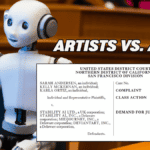A derivative work is a work based on or derived from one or more already existing works. Common derivative works include translations, musical arrangements, motion picture versions of literary material or plays, art reproductions, abridgments, and condensations of preexisting works. Another common type of derivative work is a “new edition” of a preexisting work in which the editorial revisions, annotations, elaborations, or other modifications represent, as a whole, an original work.
To be copyrightable, a derivative work must incorporate some or all of a preexisting “work” and add new original copyrightable authorship to that work. The derivative work right is often referred to as the adaptation right. The following are examples of the many different types of derivative works:
- A motion picture based on a play or novel
- A translation of a novel written in English into another language
- A revision of a previously published book
- A sculpture based on a drawing
- A drawing based on a photograph
- A lithograph based on a painting
- A drama about John Doe based on the letters and journal entries of John Doe
- A musical arrangement of a preexisting musical work
- A new version of an existing computer program
- An adaptation of a dramatic work
- A revision of a website





